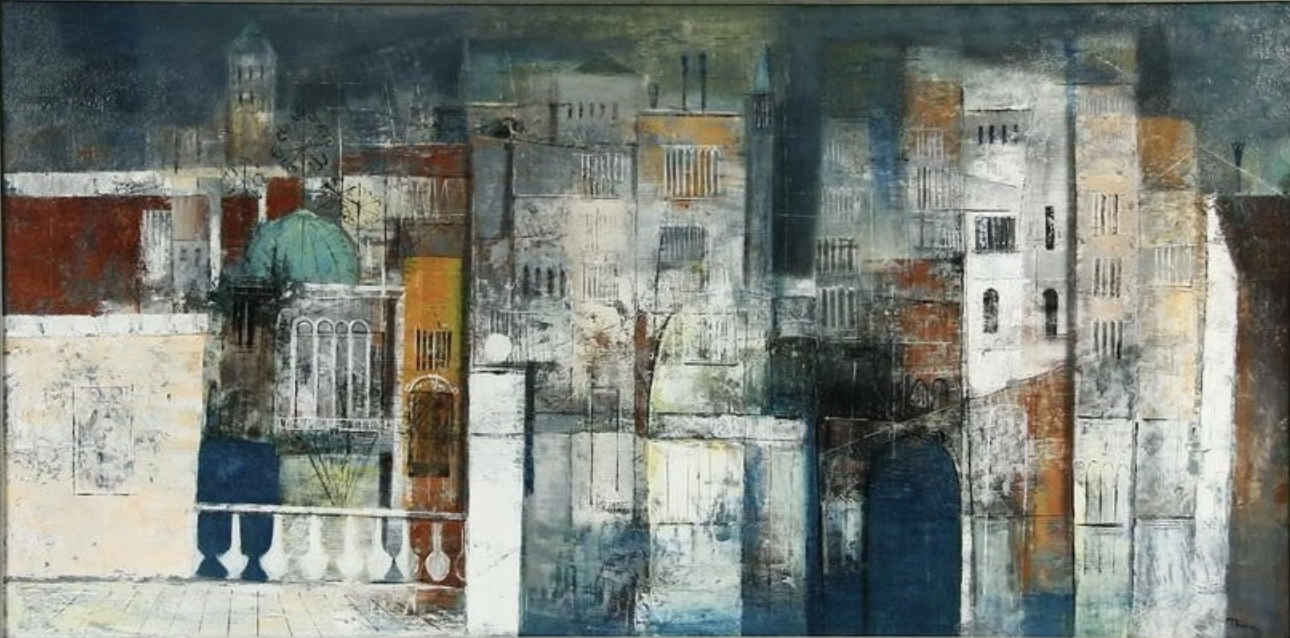











Robert Birmelin
b. 1933
“Most of my work in the last couple years has been graphic. With a pen—the black, white contrast—I can see, I can draw.”
Robert Birmelin in conversation with the Vision & Art Project, May 2022
Biography
Robert Birmelin is an American figurative painter, printmaker, and draughtsman. He was born in Newark, New Jersey, and grew up in the nearby town of Bloomfield. With the encouragement of a teacher at Bloomfield High School, he attended Cooper Union (1951–1954). He went to the Yale School of Art, where he got both a BFA (1954–1956) and an MFA (1959–1960). While Josef Albers was personally responsible for admitting him to Yale, Bernard Chaet and Gabor Peterdi served as Birmelin’s most important mentors there.
Between earning his BFA and MFA, Birmelin studied figure painting with Edwin Dickinson at the Art Students League and served in the Army.
Birmelin received a Fulbright Fellowship to the Slade School of the University of London (1960–61), followed by a Fellowship at the American Academy of Rome (1961–1964). He has received three grants from the National Endowment for the Arts and grants from the New Jersey Council on the Arts, the Tiffany Foundation, the Joan Mitchell Foundation, and others.
Beginning in 1964, he taught for more than thirty years at Queens College of CUNY. He has also served as a visiting artist and lecturer at dozens of art departments and art schools throughout the United States.
Birmelin’s paintings, drawings, and prints are in the permanent collections of many museums, including the Metropolitan Museum of Art, the Museum of Modern Art, Boston Museum of Fine Arts, the Brooklyn Museum, the Hirschhorn Museum and Sculpture Garden, the Indianapolis Museum of Art, the Smithsonian American Art Museum, and the Whitney Museum of American Art.
Birmelin’s post-macular artwork
Since about 2016, Birmelin has had no central vision in his left eye due to macular degeneration. He relies on his right eye almost entirely. It, too, is affected by macular degeneration, though to a lesser degree. He’s particularly aware of this in low light when what he calls a “dead spot” in his right eye becomes apparent. If the light isn’t poor but is less than good, everything he sees appears to have a slight film across it. It’s hard for him to discern tones unless the contrasts between them are sharp. To see color well, he must baffle his eyes with his hand to limit the amount of light coming in. His vision loss doesn’t always make sense to him. As he says, “I can hardly discern the features of someone standing in front of me in a room, but I can see the leaves outside the window very, very clearly.”
Because of his difficulty distinguishing tone and color, he has since given up painting in acrylics after being unable to finish paintings he started in 2016-17. Instead, he is drawing with a black pen, whose marks, in contrast to the white paper, he can clearly see. He sometimes still uses color, though in a limited way, adding gouache and watercolor to more linear underpinnings, thus doing things, as he says, that “hang between drawing and painting.”
V&AP Resources Related to This Artist

Feature Article
Robert Birmelin: Weaving a World of Reality and Dream
Several works spanning Robert Birmelin's career are now on display at the Stanek Gallery in Philadelphia.
Read More











